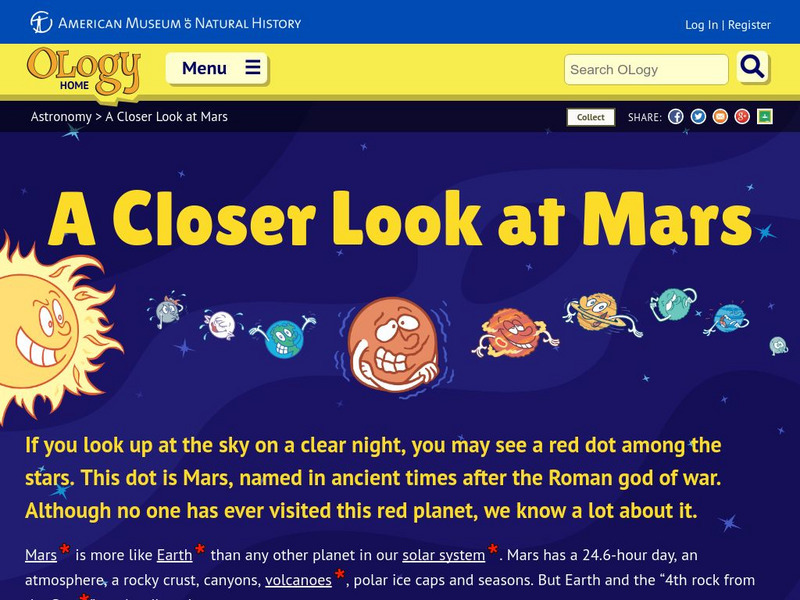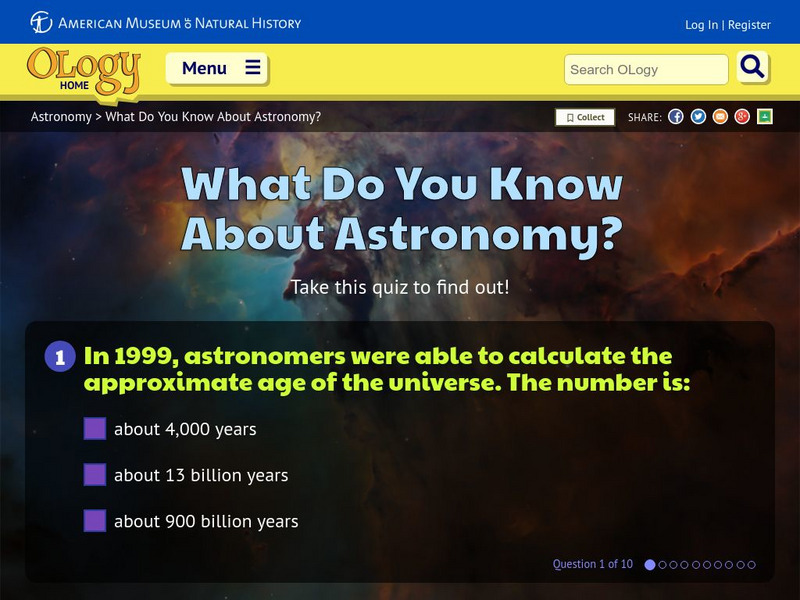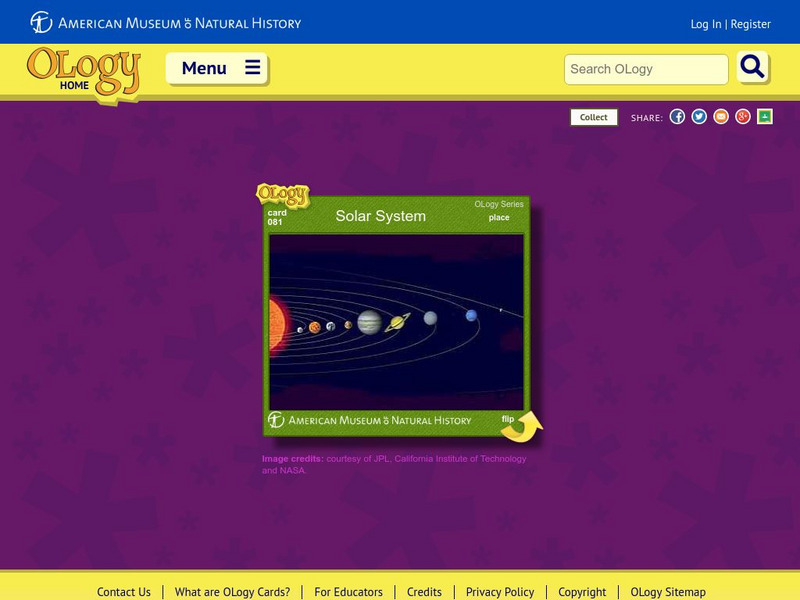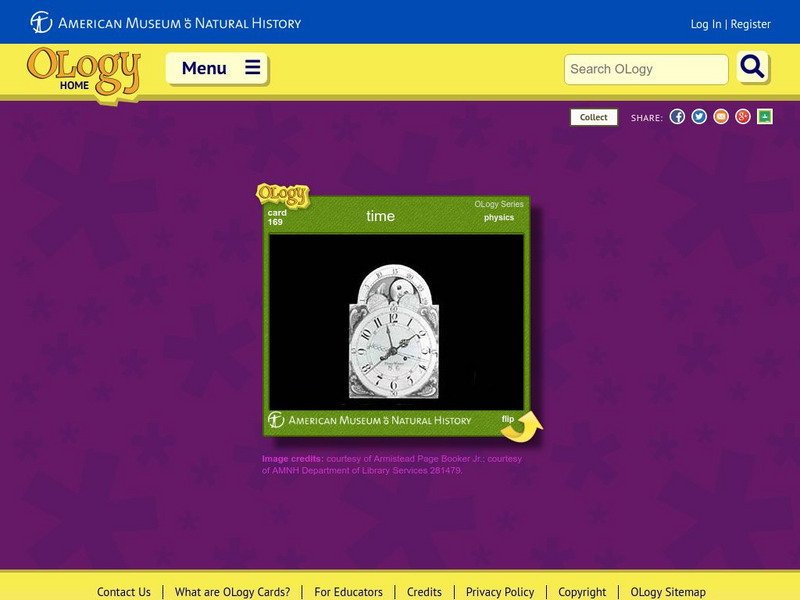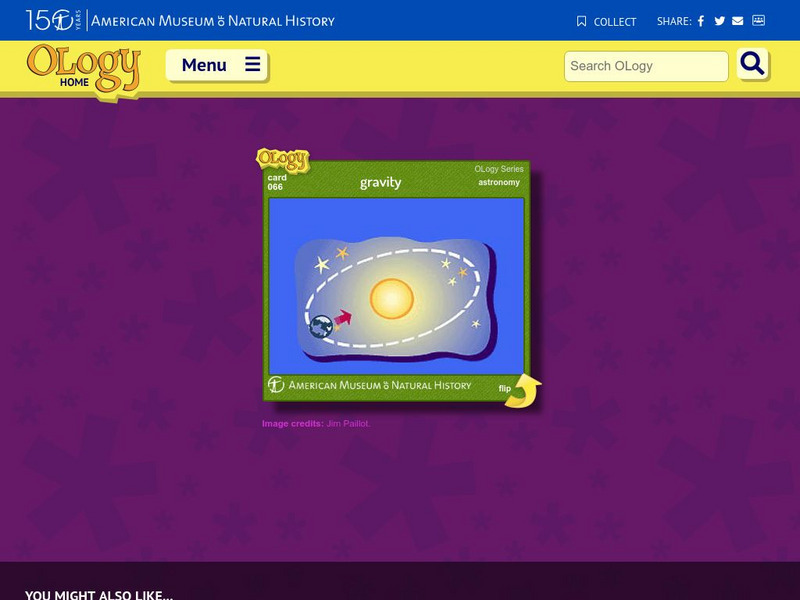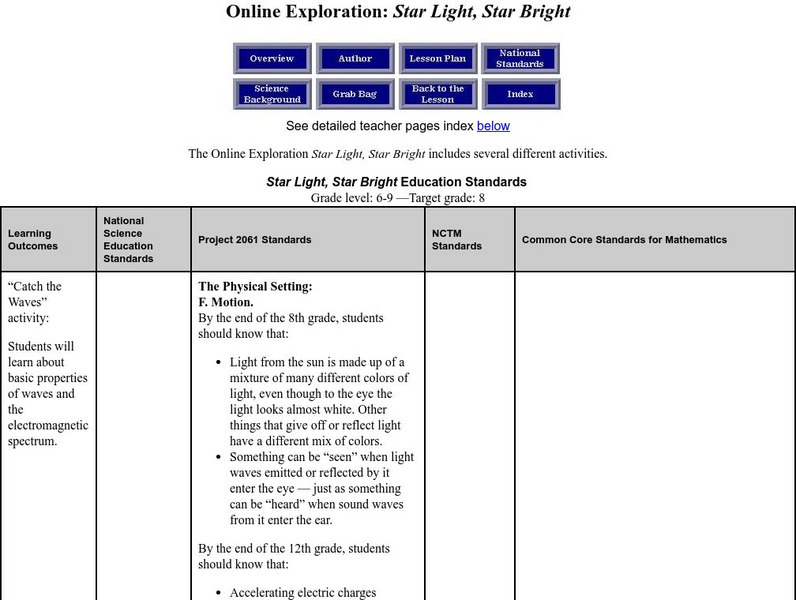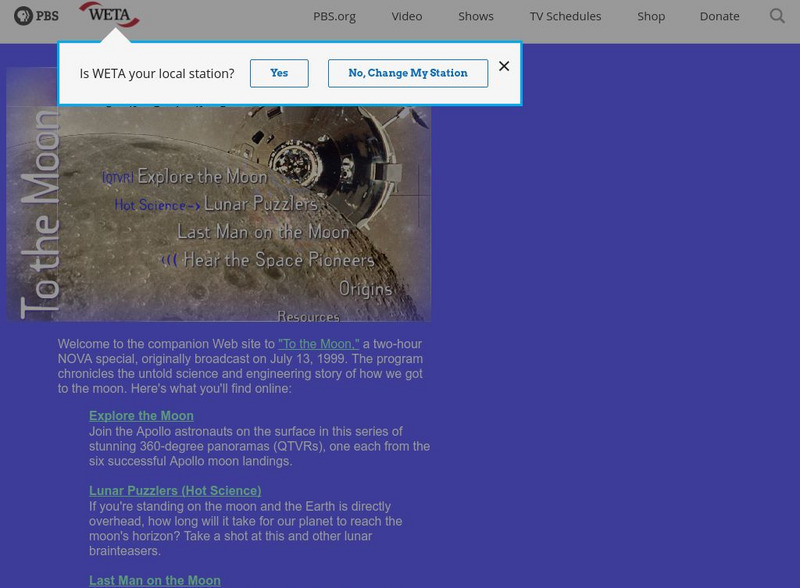American Museum of Natural History
American Museum of Natural History: O Logy: Stuff to Do: Space Travel Guide
What makes science fiction so exciting? Read some examples of the genre and then create your own science fiction story about space travel. Use the supplied "travel guide" to generate ideas and structure your plot.
Space Telescope Science Institute
Amazing Space: Star Light, Star Bright
An online exploration where students learn the basics about light and the properties of waves and the electromagnetic spectrum. Students will also learn how to measure wavelength and frequency so they can understand the electromagnetic...
Space Telescope Science Institute
Amazing Space: Galaxy Hunter
Journey to the wildest regions of space, and wrestle with cosmic giants, galaxies. Explore the Hubble Deep Fields from a statistical point of view.
American Museum of Natural History
American Museum of Natural History: O Logy: A Closer Look at Mars
If you look up at the sky on a clear night, you may see a red dot among the stars. This dot is Mars, named in ancient times after the Roman god of war. Although no one has ever visited this red planet, we know a lot about it. This site...
NASA
Nasa: Bibliography on Martian Exploration
This site from NASA provides a selected Annotated Bibliography on Martian Exploration presents classical Mars reading material from Percival Lowell and Alfred Russel Wallace from the turn of the last century, Werner von Braun and Willy...
American Museum of Natural History
American Museum of Natural History: O Logy: What Do You Know? Astronomy
Take this ten-question self-scoring quiz to test your knowledge of astronomy facts: age of the universe, why stars and planets are spheres, where other life might exist in the outer space, the Milky Way, and more.
American Museum of Natural History
American Museum of Natural History: Ology: Astronomy: Are You Cut Out for Mars?
Do you have what it takes to go on a space mission to the Red Planet? Think you can handle it? Take this quiz to find out!
NASA
Nasa Space Science Data Archive: Lunar Exploration Timeline
Available in both HTML and Shockwave formats, this site is a visual timeline of US, Soviet, and Japanese Lunar exploration. Each point of the timeline links to text information about that spacecraft and mission.
TED Talks
Ted: Ted Ed: The Journey to Pluto, the Farthest World Ever Explored
Alan Stern explains how NASA's New Horizons mission will to allow us to see Pluto for the first time.
American Museum of Natural History
American Museum of Natural History: Solar System O Logy Card
Here's an Ology Card about the Solar System, offering a small image, a definition, and information on how "far out" our Solar System is. Includes questions to quiz your knowledge and quick facts about the Solar System's size, rotation...
American Museum of Natural History
American Museum of Natural History: Universe O Logy Card
OLogy cards are like virtual baseball cards about all kinds of science topics. This one is about the Universe and the astronomers that studied the Universe. See if you can answer a few questions when you're done reading.
University of South Florida
Exploring Florida: Nasa Photographs
This colorful display has numerous photographs taken throughout the history of Cape Canaveral. Images include shuttle launches, landings, and even the astronauts themselves. Captions are included with each picture.
American Museum of Natural History
American Museum of Natural History: Piloting Red Rover
Do you have what it takes to drives a robot on Mars?
Smithsonian Institution
National Air and Space Museum: Pioneers of Flight: Civilian Aviation
Even after Lindbergh's famous solo flight, he continued to explore flight and its possibilities. Look inside the Sirius cockpit and then pack up yourself to fly around the world. One problem, however, you only can take on a limited...
American Museum of Natural History
American Museum of Natural History: Ology: In Pictures: Journey to the Stars
Two astrophysicists present images of stellar phenomena in this resource and explain why stars are so important to the existence of life on Earth.
American Museum of Natural History
American Museum of Natural History: Time O Logy Card
Flip over this interactive OLogy card to find short overviews, fact-or-fiction questions, and similar bite-size bits of information about the nature of time, time travel, atomic clocks, and the general theory of relativity.
Cosmos 4 kids
Cosmos4 Kids: Exploration: Rockets
The entire history of rocketry took place in 100 years! The early 1900's saw their first appearance, and by the end of the century, rocket technology took many forms with the most famous being the Space Shuttle. The brief, to the point...
American Museum of Natural History
American Museum of Natural History: Ology: Gravity
Flip the card, and learn about gravity.
Annenberg Foundation
Annenberg Learner: Earth and Space Science: Restless Landscapes
Material to begin an exploration of the sand formation, landforms, and underground water. An hour-long video is accompanied by learning goals, an outline and overview, details on the ice ages, glaciers, and glacial landforms, and ideas...
Space Telescope Science Institute
Amazing Space: Star Light, Star Bright
This online exploration provides an opportunity to identify the different properties of waves and the relationship that exists between energy, wavelength, and frequency. Correlate images from the Hubble Telescope to the wavelength,...
NASA
Nasa: Dare Mighty Things
Explore this interactive timeline to learn about fifty years of planetary exploration. Click on each box for more expanded details.
PBS
Nova: To the Moon
This companion website of a NOVA program that aired in 1999 features extensive information that focuses on moon research and includes a history of the Apollo missions as well as the science of the moon's origins.
Space Telescope Science Institute
Amazing Space: Comets: Comet Facts, Myths, and Legends
An interactive book full of interesting information about comets - their discovery, beliefs about them, factual information, and famous comets. An 'All about comets' link at the bottom of the page has lots of background information on...



